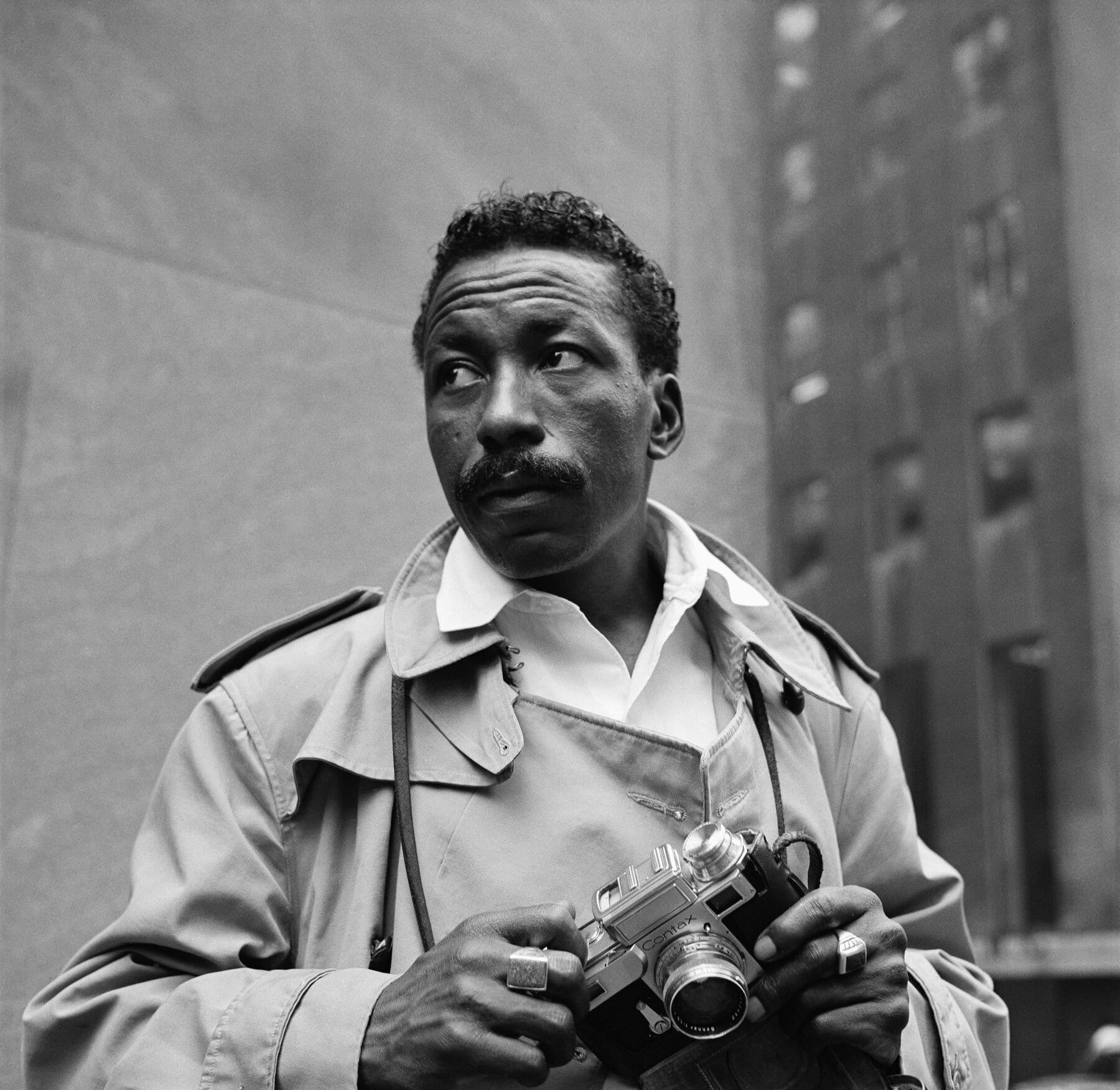In 1969, Gordon Parks was in Berkeley and Oakland, California, photographing members of the Black Panther Party on assignment for Life magazine. By 1971, he was depicting a fictional Black militant army for the MGM film Shaft. “The militants,” as they were called in the script, or “the Lumumbas,” as they are called in the film, were not cast in a very favorable light, however. Parks, who had also famously profiled the Nation of Islam’s leaders—including Elijah Muhammad and Malcolm X—for Life, was viewed so approvingly by them and the leadership of the Panthers that Eldridge Cleaver asked him to join the Panthers as minister of information, Elijah Muhammad attempted to commission him to make a movie about his organization, and Malcolm X made him the godfather to his infant daughter. In his 1997 photo-memoir Half Past Autumn: A Retrospective, Parks recounts that although he both deeply identified with and sympathized with the Black Power revolution, ultimately he couldn’t endorse it. “I was black and my sentiments lay in the heart of black fury sweeping the country,” he wrote. “I recognized his [Cleaver’s] scars and acknowledged my own. Yet we met over a deep chasm of time, the events of which forged different weapons for us . . . I prefer changing things without violence.”
By 1971, Malcolm X was long dead, the Nation of Islam was in disarray, and the majority of the leadership of the Black Panther Party was either dead, incarcerated, or living in exile from the United States. Yet Parks had quietly started a revolution in his own way, using the weapons, “the camera and the pen,” that he had honed over a lifetime working in image culture to fight—as he wrote in his 1965 autobiography, A Choice of Weapons—“what I hated most about the universe: racism, intolerance, poverty” and to capture the deep and raw beauty of the people suffering from those societal ills.
Parks was initially self-taught and quickly became so skilled that he was able to establish his own studio in Chicago. He would refine his documentary skills in the early 1940s working for the Farm Security Administration—which also employed such other important American photographers as Dorothea Lange, John Vachon, and Walker Evans—and went on to photograph the legendary Tuskegee Airmen on assignment for the Office of War Information before they went off to fight in World War II. He became the sole African American photojournalist at
Vogue and then at
Life magazine. Parks was in his late fifties when he agreed to direct MGM’s
Shaft after a lifetime of “firsts.” He had been the first African American musician to tour with the all-white Larry Duncan Orchestra as a young adult. Having seen the ways that television challenged print media while at
Life, he was quick to realize the potential of film, and he had become the first African American to write and direct a feature for a major Hollywood studio with the critically acclaimed
The Learning Tree in 1968. Now he would create a Black action film that would become a blueprint for Black representation in almost all of the popular culture that has followed it.



